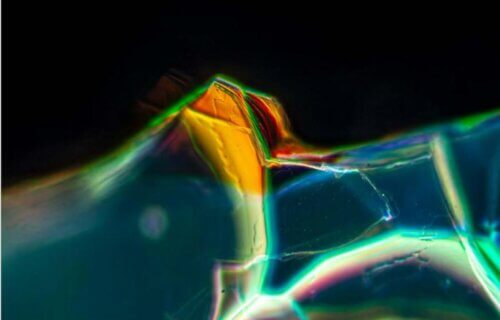MEDFORD, Mass. — Scientists have discovered fragments of glass from ancient Rome that have evolved into breathtaking crystals. The discoveries could become key components in today’s high-tech devices, including lasers, filters, mirrors, and even stealth technology.
Researchers from Tufts University’s Silklab in Massachusetts stumbled upon the find at the Italian Institute of Technology’s Centre for Cultural Heritage Technology.
“This beautiful sparkling piece of glass on the shelf attracted our attention. It was a fragment of Roman glass recovered near the ancient city of Aquileia, Italy,” says Dr. Fiorenzo Omenetto, a professor of engineering at Tufts, in a university release.
The team affectionately referred to the object as “wow glass.” Scientists soon realized that they were observing naturally-formed photonic crystals —structures that can block certain wavelengths of light while allowing others to pass through.
“It’s really remarkable that you have glass that is sitting in the mud for two millennia and you end up with something that is a textbook example of a nanophotonic component,” notes Dr. Omenetto.
For those unfamiliar with the term, “nanophotonic” refers to the study of the behavior of light on the nanometer scale and the interaction of nanometer-scale objects with light. Simply put, it’s the science of how tiny structures can control light, and it has a range of important applications in modern technology.

The ancient fragments date back to between the 1st Century BC and the 1st Century CE and originated from the sands of Egypt, pointing to global trade routes even in those times. The glass fragment has largely preserved its dark green color, but a millimeter-thick, golden, mirror-like patina covers its surface. The team used a sophisticated scanning electron microscope to examine the structure of this patina.
“Basically, it’s an instrument that can tell you with high resolution what the material is made of and how the elements are put together,” explains Dr. Giulia Guidetti, another Tufts professor involved in the study.
They found that the patina was composed of extremely regular layers of silica, arranged in a way that resembled “Bragg stacks” — a specific arrangement that reflects light in unique ways. This complex structure likely resulted from a process termed “corrosion and reconstruction,” which unfolded over approximately 2,000 years.
“The surrounding clay and rain determined the diffusion of minerals and a cyclical corrosion of the silica in the glass,” Dr. Guidetti elaborates.
What makes this find even more exciting is its potential for contemporary applications.
“While the age of the glass may be part of its charm, in this case if we could significantly accelerate the process in the laboratory we might find a way to grow optic materials rather than manufacture them,” adds Dr. Omenetto.
The research could usher in a new era of material science influenced by ancient technologies.
The study is published in the journal Proceedings of the National Academy of Sciences.
South West News Service writer James Gamble contributed to this report.
You might also be interested in:
- We now know what ancient Rome smelled like thanks to 2,000-year-old perfume bottle
- When in Rome: Archaeologists discover ancient wooden phallus that may be exactly what it looks like
- Ancient gold coin believed fake for 200 years is actually real — and reveals a long-lost Roman emperor!


Shatter glass items, toss the pieces in piles, return in 2000-1500 years.